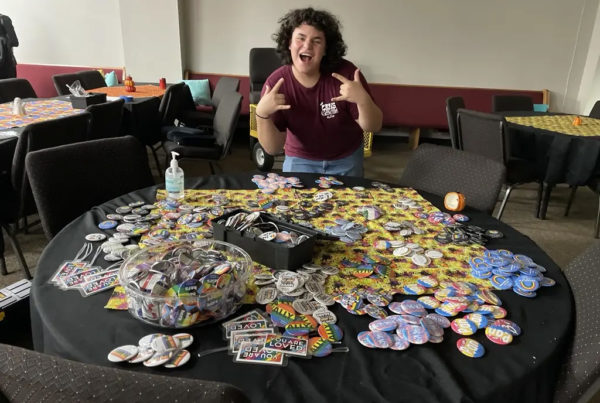For many Texas parents, the warnings about the synthetic opioid fentanyl have been terrifying. But for parents in Central Texas’ Hays CISD, the risks feel especially real.
Four students in the district died of fentanyl poisoning over the summer and in the first week of school. And just in the past few weeks, a middle school student had to be treated on campus to prevent another death.
Hays CISD Superintendent Eric Wright joined the Texas Standard to talk about how his district is approaching the issue. Listen to the story above or read the transcript below.
This transcript has been edited lightly for clarity:
I know that a lot of young people attending Hays CISD have been talking about fentanyl and the emphasis that you folks have been putting on it. Did this sudden rise of fentanyl in your district come as a surprise? Did you have any warning?
Eric Wright: No, it was a total shock and a surprise this August. And right before school started, and after we were first informed by our local law enforcement, we felt like we needed to get involved and to educate our kids in our community.
Any idea as to why Hays seems to have been hit so hard compared to some of the surrounding areas?
You know, it’s just my own personal opinion, but I think the dealers or distributors actually just got a bad batch and whatever supply they received happened to end up here in Hays County.
That’s the thing you can’t bank on, though, because you can’t see the fentanyl when it’s laced into some of these drugs that young people will experiment with, at least if history is any indication.
You know, that’s right. Those counterfeit pills look so lifelike and realistic. And compared to the real ones that you get at the pharmacy, it’s hard to tell the difference.
A lot of young people roll their eyes at “just say no” messaging. How do you increase that message and keep young people listening and paying attention, given the gravity of this situation with fentanyl?
Well, we have reached out to the parents who have lost their students and loved ones, and then also the parents of children that have overdosed and that we have been able to revive and bring back to life. And then we also have a student advisory panel. And it’s made up of four students from each of our four high schools. And we basically run everything through them. And so we kind of have just a sounding board from our current students.
Could you sort of give us a sense of what that fentanyl education campaign looks like if you’re a student? I mean, is it posters? Is it lectures? What exactly are you doing?
It’s a combination of many things. We have a poster campaign that the students helped us create. We have, you know, stickers that we put throughout the building. We also do videos and we run that by those kids as well. And then their major project is a social media campaign. And so they’ve urged us to go that route.
Tell us a little bit more about the video and what the messaging is like in the video.
So we’ve tried to be really realistic and fortunately, it’s been very difficult for our parents that have lost students, but they stepped forward and they gave their account of what transpired and what signs they felt like they may have missed or what others should be on the lookout for, to try to educate from a parent perspective. And then we’ve actually had students that have overdosed that have shared the battle that they were facing and then what supports are available and what they can do to try to overcome it. And so it’s more powerful when it’s person-to-person and people that have actually experienced these types of issues and tragedies.
How can you tell whether or not the campaign is working? I mean, what sort of feedback are you getting and how do you gauge that?
Well, simply, you know, we lost four kids in August. And, knock on wood, we haven’t lost any more kids since then. We’ve had a few that have overdosed. And we’ve been able to revive them. We do have narcan on each of our campuses now, and we feel like a lot of those things were working and that people are reaching out to our hotlines. And so we feel like the overall campaign has just increased awareness and is targeting those that need it. Although we know we still have more work to do.
Have you been in touch with other school district leaders in the state? I’m thinking that perhaps they can learn from what you’re doing there in Hays County.
Yeah, we have definitely shared all the information that we’ve gathered with the Texas Education Agency. They reached out to us and asked if they could utilize our information. And then I’ve been asked to speak to the Central Texas Superintendents Group. And I also was able to share all of our resources and information with them and gave them clearance to use any of our materials. And so it’s been spreading in different school districts from all across the state who have contacted us and they’ve asked if they could use our videos or replicate our resources. And we said “absolutely.”
You know, you mentioned that you had a hunch that maybe this was a bad dose. Y’all are dedicating a lot of resources, a lot of time, a lot of focus on this fentanyl issue. Is there a danger here that maybe folks don’t take it as seriously as it needs to be taken, or do you think it’s being taken with sufficient seriousness around the state?
No, I think it’s been taken more and more seriously and, with the legislative session coming forward, they’ve talked about the drug trafficking across the border and just the issues that we’re having with it across the state. So I think it’s getting more media attention than it ever has before. And so I think people are taking it very seriously.












